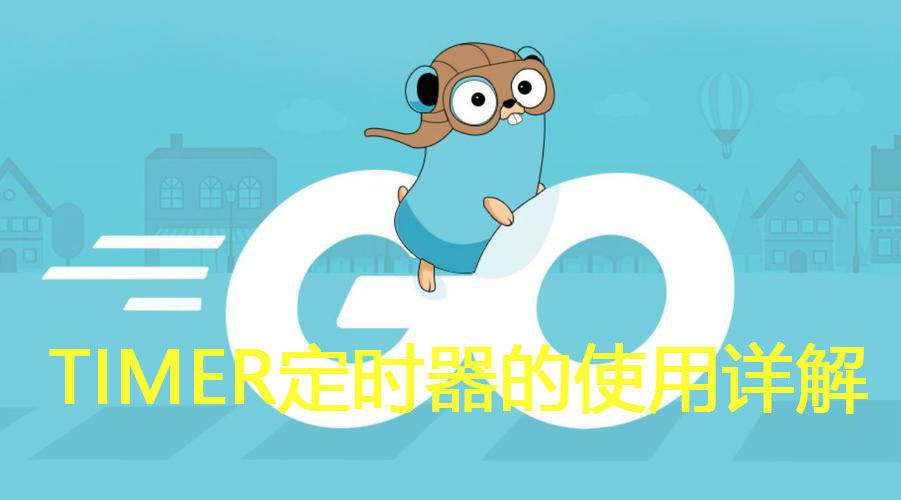一、定时器
项目经常会有需求:到达某一个特定的时刻就执行我们设定的逻辑,或者周期性的去执行某一个任务。

二、Timer
Timer是一个一次性的时间定时器,在我们设定的某一个时刻将会执行一次。
// The Timer type represents a single event.
// When the Timer expires, the current time will be sent on C,
// unless the Timer was created by AfterFunc.
// A Timer must be created with NewTimer or AfterFunc.
type Timer struct {
C <-chan Time
r runtimeTimer
}
其中的C是一个只读的Channel,如果在没有到达我们设定的时间的时候,管道内会没有数据写入,一直会处于阻塞的状态,到达设定的时间就会向管道写入一个系统时间,触发事件。
三、创建Timer
// NewTimer creates a new Timer that will send
// the current time on its channel after at least duration d.
func NewTimer(d Duration) *Timer
使用示例:
func main() {
timer := time.NewTimer(2 * time.Second)
<-timer.C
fmt.Println("hello world")
}
程序会在两秒之后打印"hello world",这两秒会一直阻塞,直到到达我们的超时时间。
四、停止Timer
func (t *Timer) Stop() boo
返回值如果是true:还没有到达超时时间,在超时时间内就停止了timer。
返回值如果是false:执行stop()时,已经到达了超时时间。
func main() {
timer := time.NewTimer(2 * time.Second)
fmt.Println(timer.Stop())
}
五、重置Timer
func (t *Timer) Reset(d Duration) bool
对于已经过期或者已经失效的timer,可以通过重置方法使其继续生效。
使用示例:
func main() {
timer := time.NewTimer(2 * time.Second)
<-timer.C
fmt.Println("hello world 1")
fmt.Println("stop 1 ", timer.Stop())
timer.Reset(2 * time.Second)
fmt.Println("stop 2 ", timer.Stop())
}
运行结果如下:
hello world 1
stop 1 false
stop 2 true
<-timer.C 阻塞,一直到超时时间,之后使用stop()就会出现false,timer.Reset重置之后Timer又生效,再使用stop()就会出现true。
1、time.AfterFunc
func AfterFunc(d Duration, f func()) *Timer
传入的参数为超时时间,还有一个具体的函数f,返回一个Timer的指针,作用是在创建出timer之后,在本Goroutine,等待设置的时间之后执行函数f。
func main() {
timer := time.AfterFunc(time.Second*1, func() {
fmt.Println("hello world")
})
defer timer.Stop()
time.Sleep(2 * time.Second)
}
2、time.After
func After(d Duration) <-chan Time {
return NewTimer(d).C
}
根据函数定义,传入时间参数,最后返回的就是新建Timer里面的管道,这个函数相当于实现了Timer。
time.After 一般会配合select一起使用。
func main() {
ch := make(chan struct{})
go func() {
time.Sleep(time.Second * 5)
ch <- struct{}{}
}()
select {
case <-ch:
fmt.Println("channel data")
case <-time.After(time.Second * 1):
fmt.Println("time after")
}
}
使用select来监听两个Channel,第一个ch是五秒之后才会有数据,第二个是一秒之后就会有数据,所以会输出"time after"。
六、Ticker
func NewTicker(d Duration) *Ticker
NewTicker返回 一个Ticker对象。
1、Ticker对象定义
// A Ticker holds a channel that delivers ``ticks'' of a clock
// at intervals.
type Ticker struct {
C <-chan Time // The channel on which the ticks are delivered.
r runtimeTimer
}
Ticker和Timer对象一样,含有一个channel通道,每隔一段指定的时间会往里面发送数据,根据这个消息管道来触发事件,只有关闭Ticker对象才不会继续发送消息。
2、使用示例
func Watch() chan struct{} {
ticker := time.NewTicker(2 * time.Second)
ch := make(chan struct{})
go func(ticker2 *time.Ticker) {
defer ticker.Stop()
for {
select {
case <-ticker.C:
fmt.Println("ticker")
case <-ch:
fmt.Println("ch")
return
}
}
}(ticker)
return ch
}
func main() {
ch := Watch()
time.Sleep(6 * time.Second)
ch <- struct{}{}
time.Sleep(2 * time.Second)
close(ch)
}
输出结果:
ticker
ticker
ticker
ch
七、注意
调用ticker.Stop只会停止ticker,但不会关闭ticker.C这个管道,所以我们还需一个一个channel来控制Goroutine的退出。
